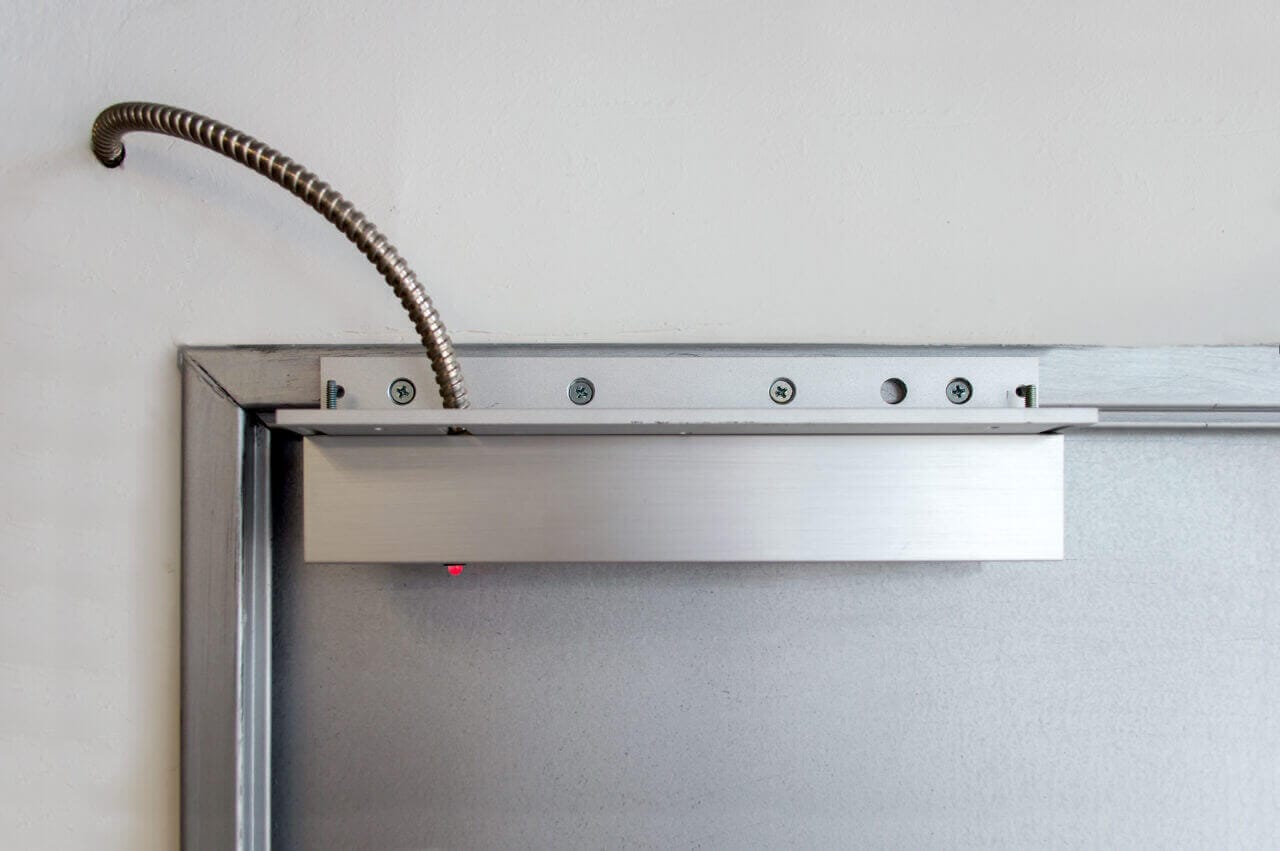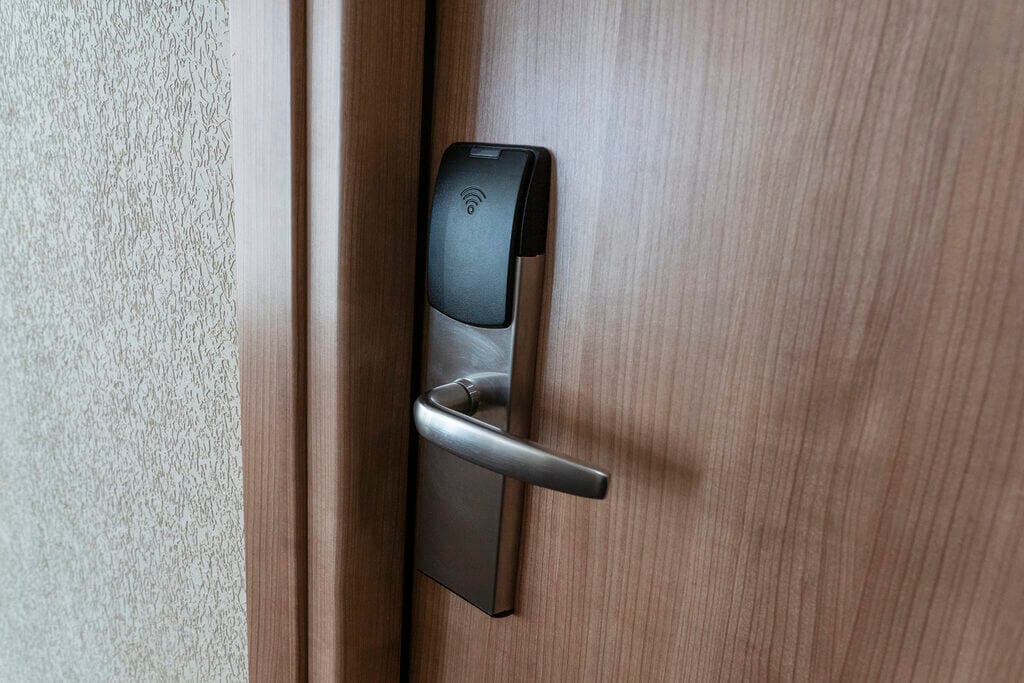When it comes to choosing an access control system that meets your security needs, it’s crucial to consider its functionality and how well it aligns with your business’s requirements for security, convenience, and management.
So let’s talk about the differences and functionalities of fail safe and fail secure locks, as you’ll definitely encounter them when looking into the commercial door locks. Both of them utilize electricity to function, but they have distinct characteristics that cater to different situations. It’s important to familiarize yourself with these differences before making a decision.
In this article, we’ll delve into the difference between fail safe and fail secure locks, providing you with the necessary knowledge to make an informed decision when selecting the ideal lock for your specific requirements. So, whether you’re considering using fail secure or fail safe locks, we’ve got you covered!
Access Control Systems: Understanding Fail Safe and Fail Secure Door Locks
So, what exactly are fail safe and fail secure locks? What do these terms mean? Well, it all comes down to how these electronic locks interact with the power supply, and how they respond when power is applied or removed.
A fail safe lock is designed to automatically unlock during a power failure or any emergency situation. On the other hand, a fail secure lock remains locked even if there is a power outage or emergency. The main distinction lies in how the locks behave when power is applied or removed. This is because a fail safe lock constantly relies on electricity to stay locked, whereas a fail secure lock is designed to be unlocked with the power signal.
It’s important to note that both fail safe and fail secure products can allow for free egress.
Understanding the Mechanism: Electric Strikes and Magnetic Locks
Now that you’ve understood the main differences between how fail secure and fail safe locks work, let’s delve further. Fail secure and fail safe functionalities can be found in two types of electronic locks: electric strikes and magnetic locks.
Electric Strikes
Electric strikes have the flexibility to operate in both fail secure and fail safe modes, although they are generally better suited for fail secure mode. This means that most electric strike locks will remain locked even during a power loss. It’s important to note that operating in fail safe mode can cause the strike to overheat due to continuous power supply.
Under an electric strike system, the doors remain locked until they receive an electric signal to unlock. The signal can come from various sources, such as keypads, smart locks, card readers, and more. The signal is received by a motor that supplies controls power to the lock, which then transmits the signal to the strike. The strike moves away to release the latch, unlocking the door. When power is applied, the strike releases the latch, allowing the door to be opened.
Electric strikes are often used in conjunction with devices like panic bars. When these are pressed, door will be unlocked even if power is out to prevent lockouts, especially to ensure the safety of people and evict building in the event of an emergency.
In the case of a fail safe electric strike, if power is lost, the door can be opened without the need for additional unlocking mechanisms.
Magnetic Locks
Magnetic locks, also known as electromagnetic locks or electromechanical locks, are exclusively available in fail safe mode. These locks require continuous power consumption to securely keep the door locked.
They consist of a large electromagnet installed at the top of the door frame and a metal armature plate aligned with the electromagnet. By utilizing electromagnetism, these locks use electricity to create an electric current through the electromagnet, generating a magnetic field. This magnetic field attracts both the electromagnet and the armature, causing them to come into contact and firmly bond together, thus locking the door.
When power is applied, the electromagnetic lock is energized, and the door remains locked. However, in the event of a power failure, the lock de-energizes, releasing its hold on the door and allowing it to be opened.
Fail Safe vs. Fail Secure Lock: Choosing the Right Type of Lock
Now that you’re familiar with fail safe and fail secure locks, as well as electric strikes and magnetic locks, you might be wondering which locks are best suited for your property.
Choosing the appropriate lock involves considering the specific requirements of the area where it will be installed, along with any relevant regulations that need to be followed. Ensuring compliance with regulations is crucial to ensure optimal security. For example, fail secure locks should be used for fire-rated doors, as fail safe locks don’t provide the positive latching mechanism required by fire doors to prevent the spread of fire.
In general, fail safe locks can be suitable for areas where constant security is not the top priority but where there is a significant amount of foot traffic. These locks can ensure safety and enable quick exits during emergencies. Entry points like office doors or stairwell doors often use fail safe locks. However, this raises security concerns for certain areas.
That’s why fail secure locks are ideal for areas of your property where continuous security is of utmost importance, such as server rooms. They prioritize the overall security and integrity of the premises at all times. It’s worth noting that fail secure locks are often used together with devices like crash bars, which allow easy opening of the lock from the inside in case of an emergency.
By carefully evaluating your specific needs and considering factors like foot traffic, security requirements, and compliance regulations, you can make an informed decision about whether a fail safe or fail secure lock is the best fit for your particular situation. Consulting with a commercial locksmith can be helpful in this case.

Contact Us to Install a Fail Safe Lock or Fail Secure Lock to Protect Your Property Now
Fail safe and fail secure modes refer to the operation of electronic locks. The main difference lies in how these locks behave when power is supplied or lost. Fail secure locks stay locked during a power outage, while fail safe locks get unlocked.
Both options provide robust security and convenience. Whether you should integrate fail secure locks or fail safe locks depends on the area you want to secure and your specific needs. Fail secure locks are best suited for sensitive areas that require constant security. In addition, fire rated doors also require fail secure locks. On the other hand, fail safe locks are suitable for areas with heavy foot traffic that need to facilitate quick exits in emergencies.
These systems are utilized by two types of electronic locks: electric strikes and magnetic locks. Electric strikes can operate in both fail secure and fail safe modes, although they are commonly recommended for fail secure functionality. Magnetic locks, on the other hand, exclusively operate in fail safe mode.
Need a consultation to determine the right type of lock for your needs? Or have you already made a decision and are ready to take action? Either way, Faster Locksmith has got you covered! We have extensive experience serving the locking needs of commercial properties and ensuring that secure access control systems are installed and maintained to keep people and assets safe. We can help you decide whether it’s best for your property to use fail secure or fail safe lock, as well as install the locking system. Get in touch with us now!
